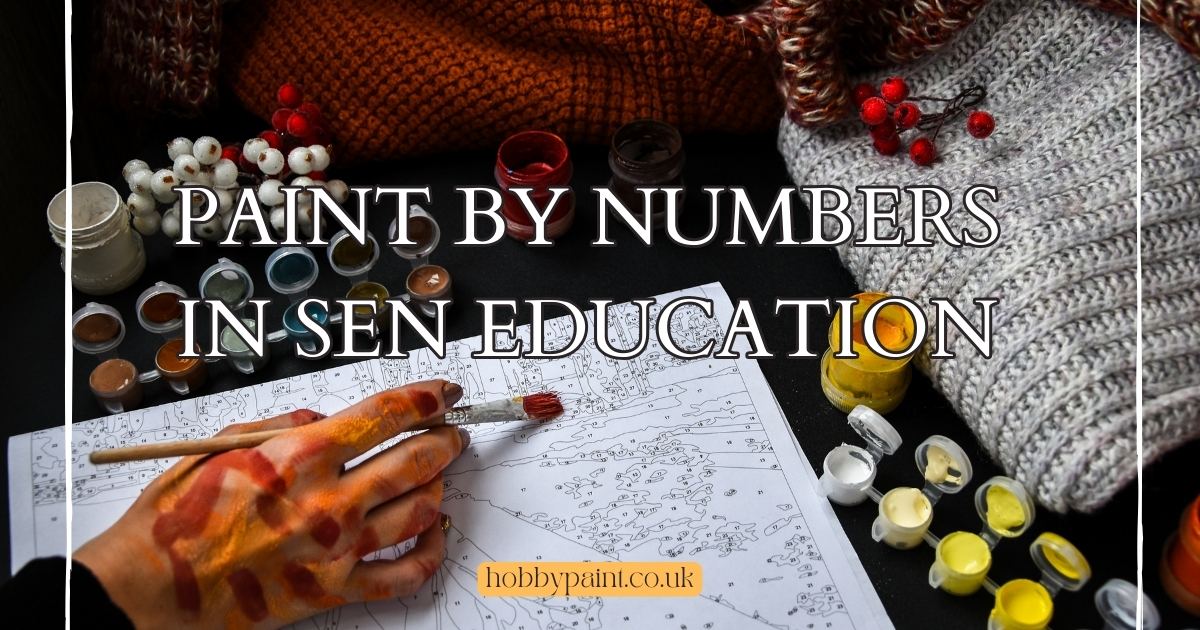
In recent years, the use of painting by numbers has gained recognition as a valuable tool in special educational needs (SEN) settings. This method, often dismissed as a simple recreational activity, has proven to be an effective means of fostering creativity, enhancing cognitive skills, and promoting inclusivity among individuals with diverse learning needs. This essay explores the merits and applications of painting by numbers in special education, shedding light on its potential to empower students, engage their senses, and create a conducive learning environment.
Understanding Special Educational Needs:
Special Educational Needs (SEN) encompass a wide range of learning difficulties and disabilities that require additional support and tailored educational approaches. Students with SEN may face challenges in various areas such as cognition, communication, social interaction, and physical abilities. Addressing the unique needs of these individuals requires innovative and adaptable teaching methods that cater to diverse learning styles.
Painting by Numbers: A Brief Overview:
Painting by numbers is an art technique that involves dividing an image into sections, each marked with a number that corresponds to a particular colour. Participants fill in each section with the corresponding colour, gradually revealing a complete and cohesive artwork. Originally designed for recreational purposes, this method has found unexpected success in the realm of special education.
- Fostering Creativity:
Contrary to the misconception that painting by numbers stifles creativity, it serves as a powerful tool to unlock and nurture artistic expression in individuals with SEN. For many students, traditional art forms may be intimidating due to the lack of structure and clarity. Painting by numbers provides a structured framework, enabling individuals to engage in the artistic process with a sense of guidance and accomplishment.
In the SEN context, creativity is not only about producing aesthetically pleasing artwork but also about developing problem-solving skills, decision-making abilities, and self-expression. By breaking down complex images into manageable sections, painting by numbers allows students to focus on small tasks, promoting a sense of achievement and boosting their confidence in their artistic abilities.
- Enhancing Cognitive Skills:
Engaging in painting by numbers requires students to exercise various cognitive skills, making it an ideal activity for enhancing mental faculties in individuals with SEN. The process involves visual perception, as participants must match numbers to corresponding colours, and fine motor skills, as they manipulate brushes or other painting tools to fill in the designated areas. Additionally, the sequential nature of the activity aids in developing attention to detail and concentration.
For students with cognitive challenges, the structured nature of painting by numbers provides a tangible and organized framework to follow. This not only facilitates a better understanding of the task at hand but also contributes to the development of essential cognitive skills, such as pattern recognition and spatial awareness.
- Promoting Inclusivity:
Inclusion is a fundamental principle in special education, emphasizing the importance of creating learning environments that cater to the diverse needs of all students. Painting by numbers emerges as an inclusive activity that can be adapted to accommodate various levels of ability within a single classroom. The simplicity of the concept ensures that participants with different cognitive, sensory, and physical abilities can engage in the activity together, fostering a sense of camaraderie and shared achievement.
Moreover, painting by numbers can be tailored to individual needs by adjusting the complexity of the images, varying the size of the sections, or modifying the tools used. This adaptability makes it a versatile tool for educators seeking to create an inclusive atmosphere where every student feels valued and capable.
- Facilitating Communication and Social Interaction:
Art serves as a universal language that transcends verbal communication barriers. Painting by numbers provides individuals with SEN a non-verbal medium through which they can express themselves, facilitating communication and social interaction. As students work on their artwork, they have the opportunity to share their creations, fostering a sense of pride and accomplishment that encourages social engagement.
Collaborative painting-by-numbers projects also promote teamwork and cooperation among students. By working together on a shared artwork, individuals with diverse abilities can contribute their unique skills and perspectives to a collective masterpiece. This collaborative aspect of painting by numbers not only strengthens social bonds but also instils a sense of community within the SEN setting.
Conclusion:
In conclusion, painting by numbers stands as a powerful and versatile tool in the realm of special education. Its ability to foster creativity, enhance cognitive skills, promote inclusivity, and facilitate communication makes it a valuable addition to the toolkit of educators working with individuals with special educational needs. By embracing the structured and guided nature of painting by numbers, educators can unlock the artistic potential of their students, providing them with a platform for self-expression, skill development, and social engagement. As the educational landscape continues to evolve, it is crucial to recognize the significance of innovative approaches like painting by numbers in creating enriching and inclusive learning experiences for individuals with special educational needs.





